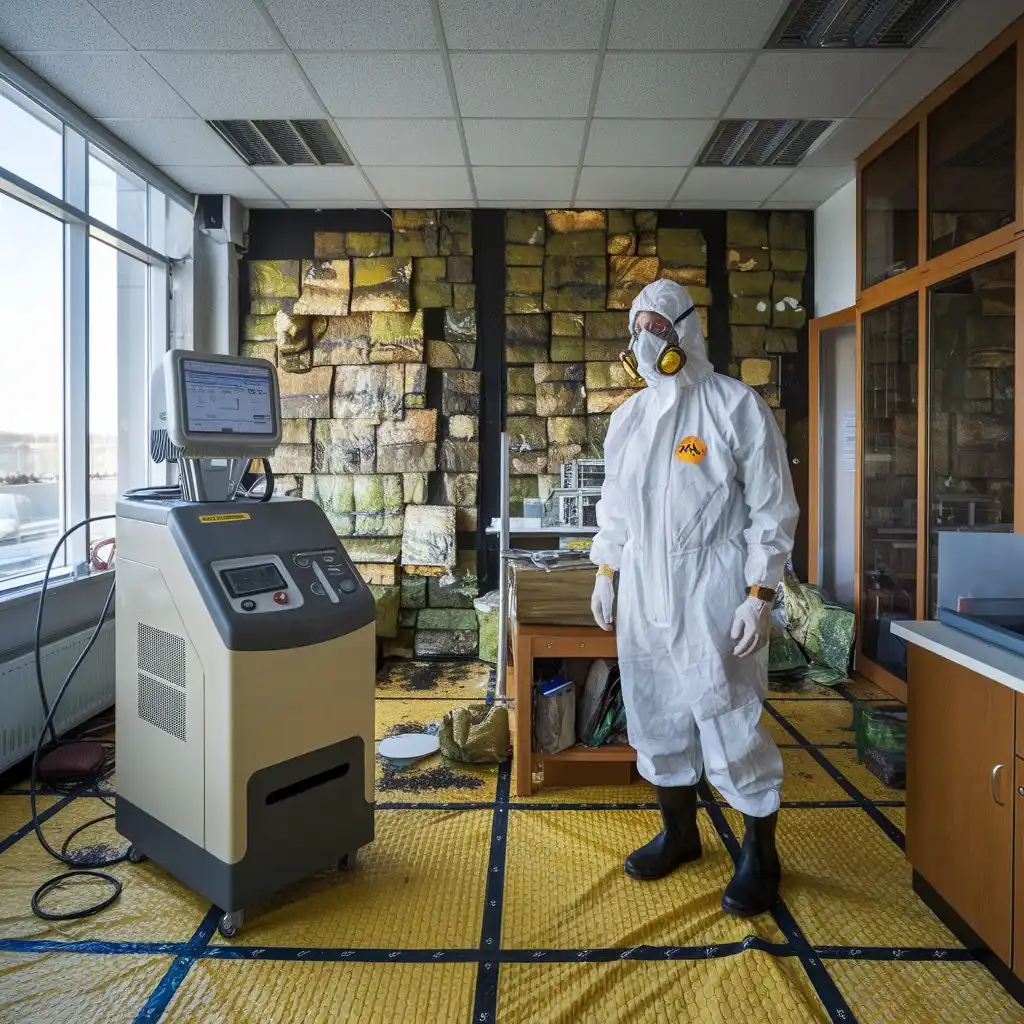If asbestos is present or suspected in a building, monitoring is necessary to manage risk and prevent exposure. Asbestos monitoring methods detect airborne fibers, assess environmental conditions, and confirm compliance with safety regulations. These methods help identify when asbestos becomes a health hazard.
What Is Asbestos Monitoring?
Asbestos monitoring is the process of checking air and surface conditions for the presence of asbestos fibers. It is used during building inspections, before and after asbestos removal, or as part of regular maintenance in older buildings. Monitoring helps ensure that asbestos fibers do not reach unsafe levels in the environment.
Why Is Asbestos Monitoring Important?
- Prevents Exposure: Monitoring helps detect fibers before they reach harmful levels.
- Ensures Compliance: Regulatory agencies require monitoring in specific situations.
- Verifies Removal: After removal work, monitoring confirms that the area is safe.
- Protects Health: Early detection helps prevent diseases linked to asbestos exposure.
Types of Asbestos Monitoring Methods

Air Monitoring
Air monitoring checks for asbestos fibers in the air. This method is used during demolition, renovation, and asbestos removal.
Key techniques:
- Phase Contrast Microscopy (PCM):
PCM counts airborne fibers using a microscope. It is fast and cost-effective. However, it cannot distinguish between asbestos and non-asbestos fibers. - Transmission Electron Microscopy (TEM):
TEM provides detailed images of fibers. It identifies asbestos specifically, even in low concentrations. It is more accurate but also more expensive. - Scanning Electron Microscopy (SEM):
SEM offers clear visuals and chemical analysis. It is useful for complex samples but is used less often due to high costs.
Personal Monitoring
Personal monitoring checks the exposure level for individual workers. A sampling device is worn during work to collect fibers from the breathing zone. The sample is then analyzed using PCM or TEM. This helps assess direct risk to workers handling asbestos-containing materials.
Static or Fixed Location Monitoring
This involves placing air samplers in fixed positions around a work area. It provides general data about asbestos fiber levels in the environment. It is useful in large buildings, schools, or public facilities during ongoing asbestos management or renovation.
Surface Testing
Dust Sampling
Dust samples from surfaces are collected using wipes or vacuum filters. These are tested to detect settled asbestos fibers. This method helps determine if past asbestos disturbances have left harmful residues.
Tape Sampling
Tape sampling uses adhesive tape to collect material from surfaces. It checks for fibers on walls, ceilings, or equipment. This method is quick and simple but less accurate than air sampling.
Bulk Sampling
Bulk sampling involves removing a piece of material (such as ceiling tile or insulation) and testing it in a lab. This method confirms whether a specific product contains asbestos. It is often the first step before air monitoring or removal work.
Lab Analysis Methods:
- Polarized Light Microscopy (PLM): Identifies asbestos types in bulk materials.
- TEM (for detailed analysis): Confirms results when PLM is unclear or inconclusive.
Clearance Monitoring
Clearance monitoring is done after asbestos removal. It checks whether the area is safe for reoccupation. It usually includes:
- Visual Inspection: To confirm all asbestos material has been removed.
- Air Testing (usually PCM or TEM): To ensure fiber levels meet safety limits.
- Final Certification: Given when conditions meet safety standards.
Real-Time Monitoring Tools
Some workplaces use portable devices for instant results.
- Fiber Counters: These devices give a rough estimate of fiber levels.
- Early Warning Sensors: Trigger alerts if fiber counts exceed limits.
- Limitations: These tools are not as accurate as lab analysis and are used for preliminary checks or ongoing risk management.
Who Performs Asbestos Monitoring?

Certified professionals perform asbestos monitoring. They are trained to:
- Collect samples safely
- Analyze results or send samples to accredited labs
- Follow legal safety procedures
- Prepare reports and safety documentation
Using certified personnel ensures legal compliance and accurate results.
Legal Requirements for Asbestos Monitoring
Government agencies set rules for asbestos monitoring. In the U.S., OSHA and EPA define the limits and procedures.
- OSHA Permissible Exposure Limit (PEL):
0.1 fibers per cubic centimeter (f/cc) of air over an 8-hour time-weighted average. - EPA Guidelines:
Require monitoring in schools and public buildings under specific conditions.
Different countries have their own exposure limits and monitoring laws. Always check local regulations.
When Should You Conduct Asbestos Monitoring?
- Before Renovation or Demolition
- During Asbestos Removal
- After Removal (Clearance)
- Regular Checks in Older Buildings
- During Occupancy Complaints or Inspections
Monitoring schedules depend on building use, material condition, and past asbestos work.
Benefits of Effective Monitoring
- Prevents Health Issues
- Avoids Legal Fines
- Improves Workplace Safety
- Supports Risk Management
- Builds Public Trust in Property Maintenance
Conclusion
Asbestos monitoring is essential for safety, compliance, and health protection. Methods like air monitoring, personal sampling, and bulk testing help detect asbestos and control its risks. Accurate monitoring requires trained professionals and follows legal standards. If asbestos is suspected, do not delay testing. Monitoring helps you make safe decisions and maintain a hazard-free environment.
Contact Us For more
Email: [email protected]
Phone Number: +937 252-4724
Address: 2617 S Smithville Rd, Dayton, Oh, United States

Dr. Chris Cameron is a leading asbestos expert with over two decades of experience in occupational and environmental health. He holds a Ph.D. in Environmental Science and has worked extensively with government agencies, private sector organizations, and health and safety regulators to assess, manage, and mitigate asbestos-related risks. Dr. Cameron is widely recognized for his research on asbestos exposure, remediation strategies, and public health policy